Decorative plaster for interior walls: an embossed decoration technology
Table of contents
-
1 materials Overview
- 1.1 varieties plasters
- 1.2 main components
- 1.3 Advantages and disadvantages
- 2 What do you need?
-
3 Decorating the walls
- 3.1 surface preparation
- 3.2 Application structural mixture
- 3.3 formation of the invoice
- 3.4 decoration
- 4 conclusion
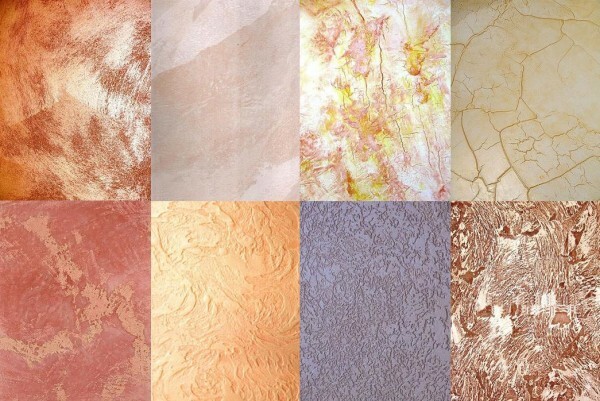
So you can decorate any wall
Decorative plaster for interior walls is considered today as one of the preferred embodiments. The article describes the composition of the mixtures for interior decoration, as well as a detailed description of the technology.
materials Overview
varieties plasters
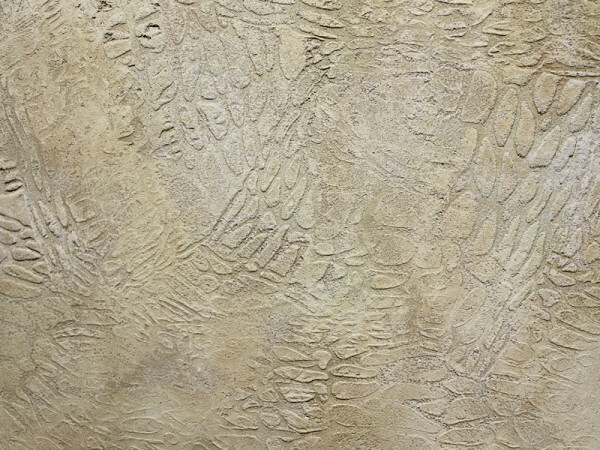
Imitation leather with special stamps
Called decorative plaster mixture, which after application to a wall not masked. Due to the high aesthetic characteristics caused by the composition of the wall becomes an attractive appearance. Also used for finishing mixtures have quite acceptable performance characteristics, so that the coating is strong and durable.

Texture created with a stiff brush
In the design of the premises used by a variety of types of decorative plasters, but they can be divided into two major groups:
| species | Features |
| textural | Ingredients for plastering made homogeneous or nearly homogeneous. The material has high plasticity, which allows it to apply thin layers, forming an arbitrary terrain - the texture of the walls. It is the basis of the texture of the decorative potential. Furthermore, the surface beauty achieved by using pigments (coloring in the mass and external), glitters, finely ground mineral additives, polishing etc. The best known example of textured coatings is Venetian stucco. |
| structural | Structural types of plaster different from textural heterogeneous composition. The plastic binder is added mineral granules which provide the formation of a beautiful surface. The granules can be either in the bulk material and on its surface. In the first case we have only a beautiful relief, which can emphasize the color. In the second - the minerals themselves play the role of the top layer. |
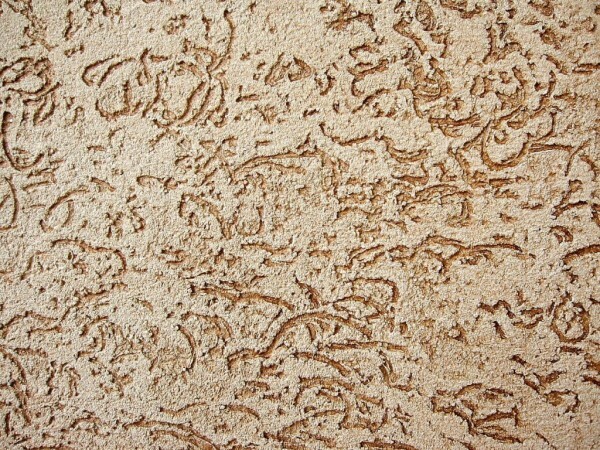
"Bark" - the most common texture with mineral granules
These kinds of decorative plaster can be purchased off the shelf, and as individual components. The first option is suitable for those who do not want to spend time on training and is ready to pay for it. The price of the individual components will be lower, but will have to respect the proportions in the manufacture of plaster mass.

Examples of mineral coatings with a crystal grain
main components
Plaster for interior decoration having a decorative high potential and has a ternary structure:

Lime weight - the basis for most of the compositions
- The basis of the material - binder, which forms a continuous coating, provides fixation of the composition on the wall and connects all the components together. Described compositions often produced with lime, silicate or acrylic binder.
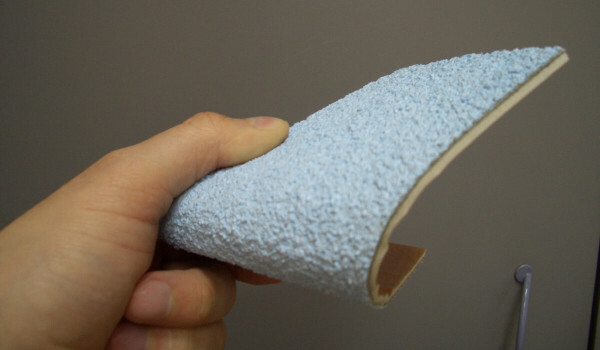
The advantage of a polymeric binder - its elasticity
Several less common materials or magnesian clay basis. Magnesite binder plastered surface provides increased resistance to moisture and clay are used where the need good resistance to high temperatures - e.g., ovens or plastering Fireplaces.
- With self-manufacturing of plaster is the most common option - lime putty. If you prepare it according to the rules, the mixture turns plastic. This allows you to create complex multi-layered texture with a minimum thickness of the finish.
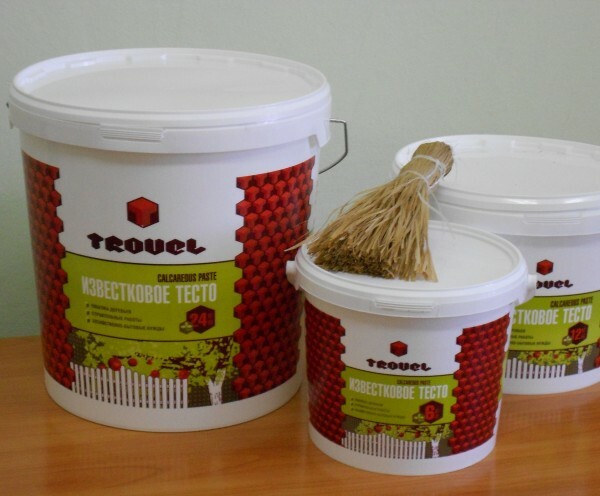
Lime putty can be bought off the shelf, but you can do it yourself
- The filler used sieved sand and mineral (marble, quartz, granite, etc.) beads. In textural compositions minerals play a mechanical function, giving additional strength to the coating - so they literally crushed to dust. Size of granules textured compositions may vary, but mixtures used in interior decoration, it seldom exceed 2-3 mm.
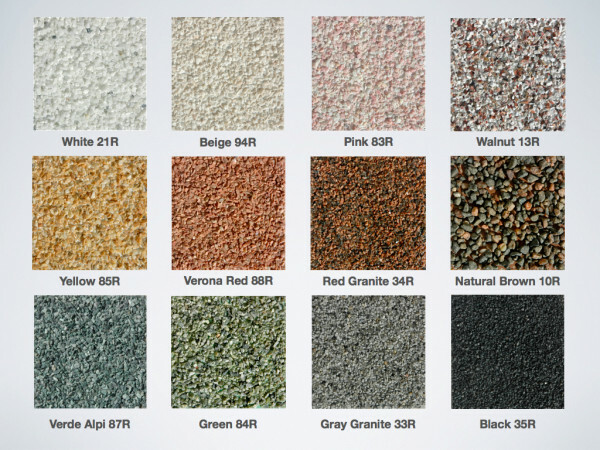
Types of mineral fillers
- Pigments - are introduced into the binder composition, giving it a primary color. Using colored mixture allows less effort to achieve artistic effects. Naturally, the dye must be chosen taking into account the planned colors finished surface.

Palette used pigments
Besides these components in the composition may include various additives:
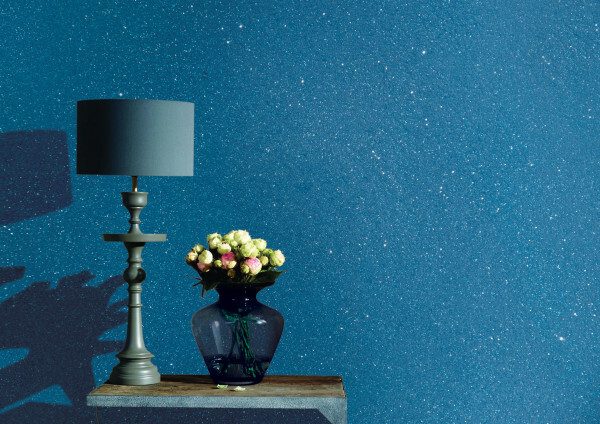
Photo coverage with sparkles
- plasticizers which increase the elasticity of the mixture;
- antiseptics;
- waterproofing components;
- fibrous additives - jute, flax, acrylics;
- glitters (mica platelets natural or synthetic sparkles);
- polymer beads, etc.

imitation patina
The presence of these components is not required, but thanks to their compositions for interior work can be made more attractive appearance or to improve their properties.
Advantages and disadvantages
Finishing walls by applying decorative plaster mixture has a number of advantages:
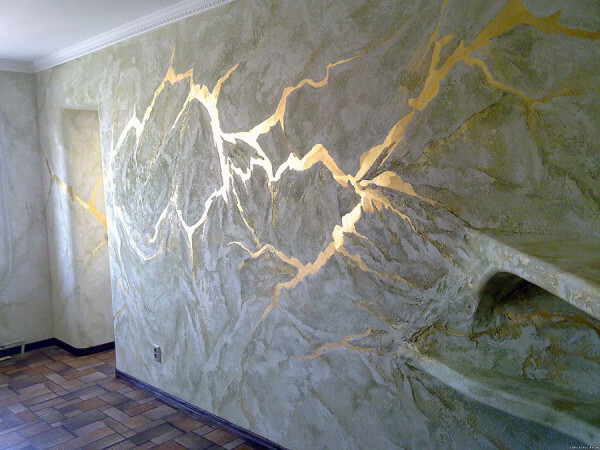
This spectacular picture you can create yourself
- First, the surface turns out very beautiful. The effect is achieved both through the formation of a unique texture, and by changing the colors and combining sections with different shades.
- Secondly, the textured surface can mask substrate unevenness. Through this process of preparing the walls of a coating of plaster is less time-consuming compared to putty for painting.
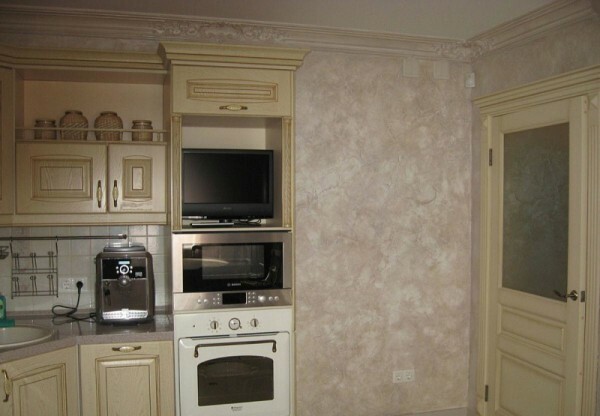
Coverage fits perfectly into the interior
- Third, after applying the binder polymerizes to form a sufficiently thick film. Plastering not only strengthens the wall, but also protects it from external influences.
- Environmental and safety can also be attributed to the advantages of this type of finish. The composition does not include plasters toxins, heavy metals and volatiles. Due to the similar decoration can be used in all residential premises, including in the bedrooms and children's rooms.
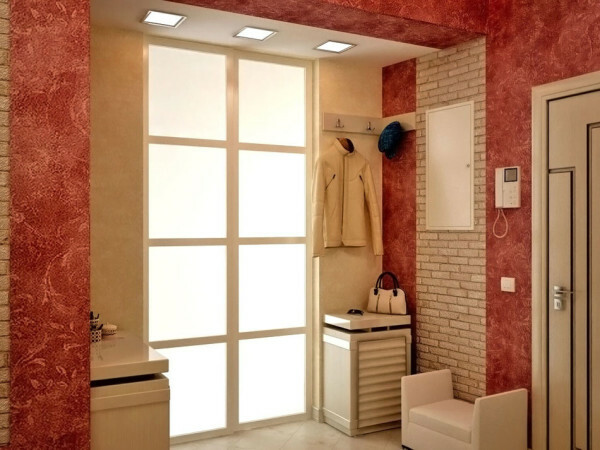
Good wear resistance allows you to trim the corridors, hallways and public buildings
- Finally, the advantage is the relatively simple application of their own hands. Of course, to create complex relief compositions, as well as for stacking, for example, the Venetian plaster is needed skill. At the same time, with minimal skill anyone can master the technology of decorative plastering, after several attempts to "prototypes" of the walls.
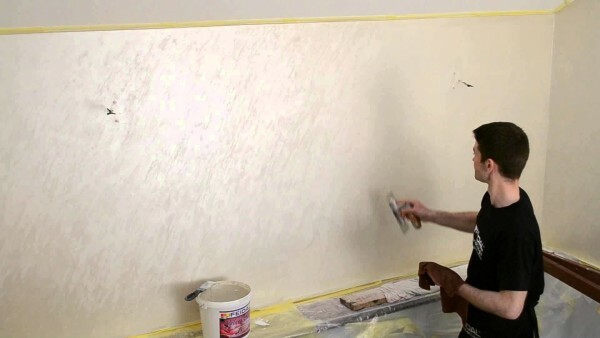
Learn the skills - will be able to quickly process large surfaces
There is this type of finish and cons:
- The first, and most obvious - is the high cost of materials. For 5 kg plaster mixture will give from 7.5 to 1000 thousand. rubles, depending on the brand of the composition. Additionally, further materials have to spend on the blister preparation (plaster, putty, primer), as well as the finishing (painting, polishing, varnishing).
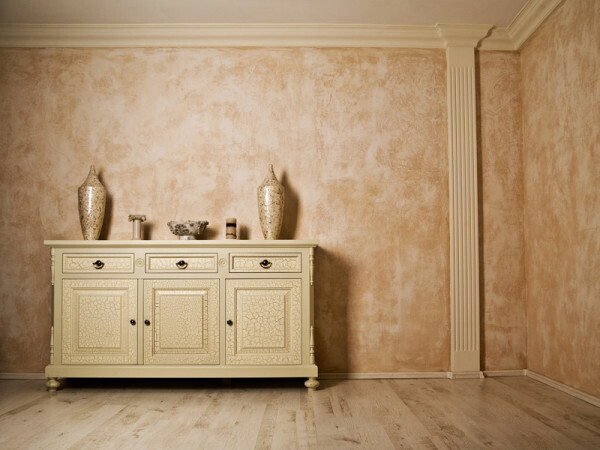
Making large area requires a significant expenditure
Flow compositions for interior decoration use ranges from 700 - 1200 grams per square meter. If applied in several layers, for example, when forming the pattern - consumption increase.
- Another disadvantage - the high demands on the ground. Yes, it does not have to be perfectly flat, but the grout can only be clean, dry and solid wall. Also, do not skimp on the primer.
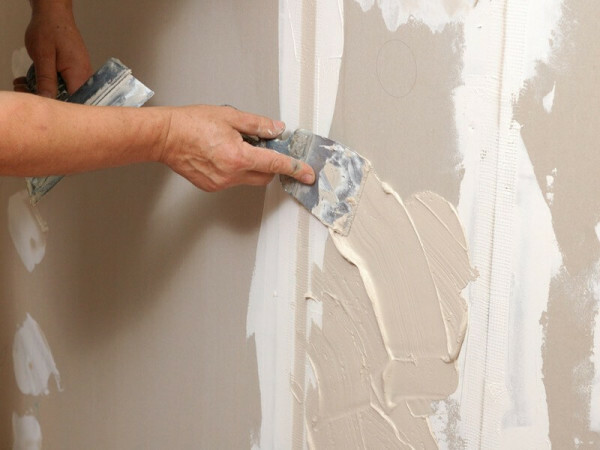
Prepare the wall should be very high quality
- Finally, difficulties may arise at the stage of dismantling. Soft base after polymerization firmly fixed on the base, because it has to take through the perforator with rough layer.
However, if you are satisfied with the financial aspect, the outs with the rest of it is quite possible to tolerate.
What do you need?
To decorate the wall with decorative plaster, we will need these materials:
| Material | unit of measurement | The average cost, rubles |
| Decorative plasters | ||
| plaster Paladio | 5 kg | 1300 |
| Plaster Tierrafino (pearl) | 5 kg | 2700 |
| Plaster Veneto (grinded marble) | 5 kg | 5800 |
| Plaster Stucco Veneto (tinting metallic) | 5 kg | 7200 |
| Grounding materials | ||
| Plaster for rough finish | 30 kg | 350 — 550 |
| putty leveling | 20 kg | 300 — 700 |
| Primers, deep penetration | 10 l | 300 — 600 |
| Grid plaster | m. rm. | 50 — 250 |
| Tools for finishing | ||
| decorative wax | 0.5 l | 1500 — 4000 |
| The varnish finish (gel) | 1 l | 450 — 700 |
| Lacquer (metallic) | 1 l | 1000 -1700 |
| pearl powder | 100 g | 250 — 400 |
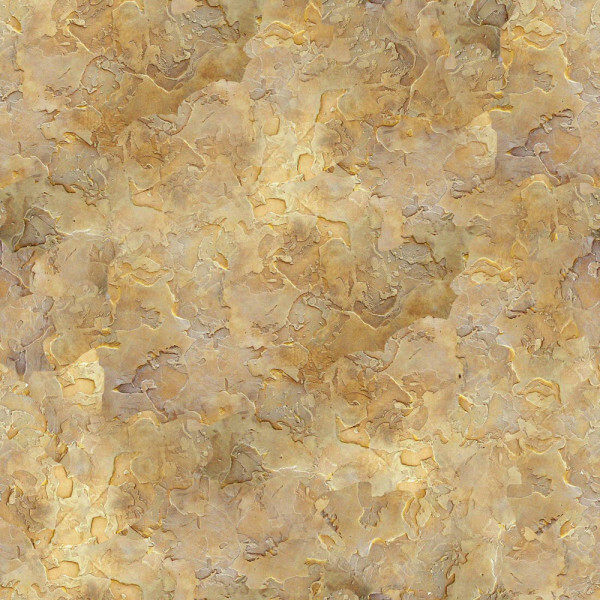
Covering Stucco Veneto marbled
When carrying out application of decorative plaster used a set of tools:
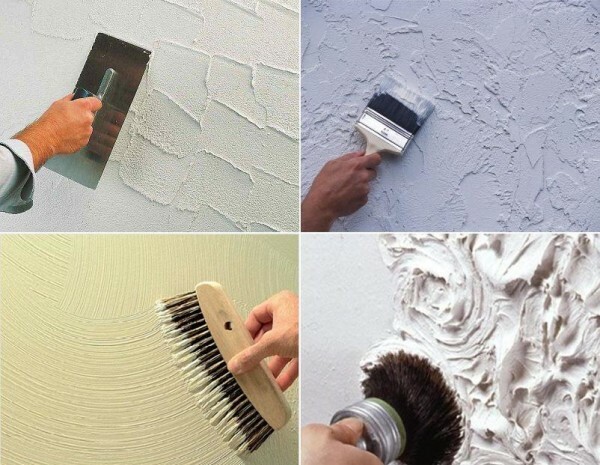
Trowel and brush must be in the set of tools for each finisher
- tank solutions (more - kneading, less - for the application);
- Drill with mixer;
- Master OK;
- plastering trowel;
- spatulas of various sizes;
- brushes (flat, with sufficiently hard bristles);
- sponges;
- rollers relief;
- improvised devices.

Rollers for patterning
List of tools depends on the kind of surface we will process. Also, the selection of devices for plastering affect kinds of textures, which we plan to apply. On the nuances of using spatulas, rollers, sponges, etc. I'll tell you in the appropriate section.
Decorating the walls
surface preparation
To decorative coating was not only beautiful but also durable, it must be applied to the prepared surface. Instructions for the implementation of this phase includes the following activities:
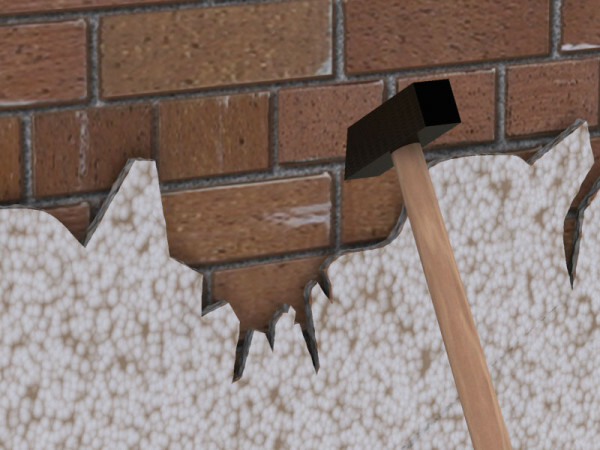
Remove old plaster
- First, check the condition of the plaster. If prostukivanii heavy hammer surface finish does not peel off and not hear a hollow sound, then by pereshtukatuirvaniya can be waived, saving time and money. If the old paint has little, bring down his hammer, clearing the brick or concrete foundation wall.
- Cracks and crevices in the support surface embroider, process and embedded primer repair composition. If time permits, use the grout with a hardener, If you need to work quickly, to seal Teschin better use epoxy remedies that polymerizes very quickly.
- Treated with base penetrating primer. It is desirable to apply at least two layers, making a pause between the approaches of several hours to polymerize the composition.
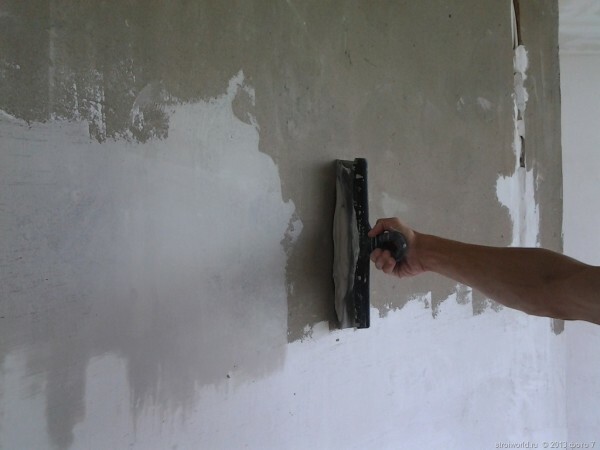
Alignment wall plaster
- Wall aligned with the plaster mixture. To do this, we put about 20 mm composition, flatten it and then rule, "deduce the plane" grater and spatulas. Dried plaster (it should not prominaetsya under the fingers) is overwritten and oshkurivaem.

Grout abrasive surface
- To align, you can use drywall. It we either stuck on the wall or mount on the wall frame of metal profiles. Plasterboard surface is plasterers and shpaklyuem, masking all the irregularities, the joints between the sheets and attachment points. Putty and grind.
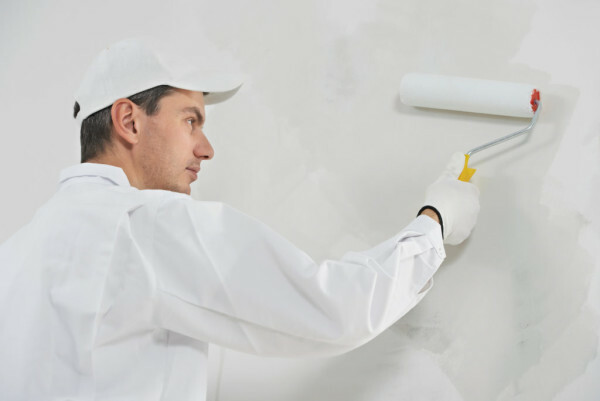
base primer - binding operation
- Stucco and nipped base was treated with a primer. After drying can proceed to the application of the decorative layer.
Application structural mixture
Structural and textural mix applied in different ways, because the decoration technology will be described separately. Let's start with the composition of styling techniques with mineral granules:
- Mineral mixtures are typically used for outdoor decoration. But at the same time, structural plaster can be used in interior work - for example, in the design of public buildings, hallways, corridors, etc. The high strength that is provided by the mineral filler, reduces wear generated coverage.

Application of the base layer
- In the first phase, we need to apply the plaster on the wall structure. For this use either ready mass or knead into a separate container, plaster, introducing into it a filler of marble chips or other minerals.
- With the float, which must be held at an angle to put the weight on the wall. Evenly distribute the composition. Select a layer thickness approximately equal to the diameter of the grains of the filler.
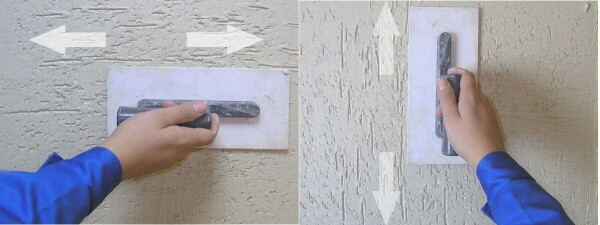
patterning
- When the train stops to stick to the tool, begin the formation of the texture. For this putting a plastic float to the surface plane of the wall and straight, diagonal or circular motion start processing. Mineral granules will move for a float, forming a pattern of grooves.
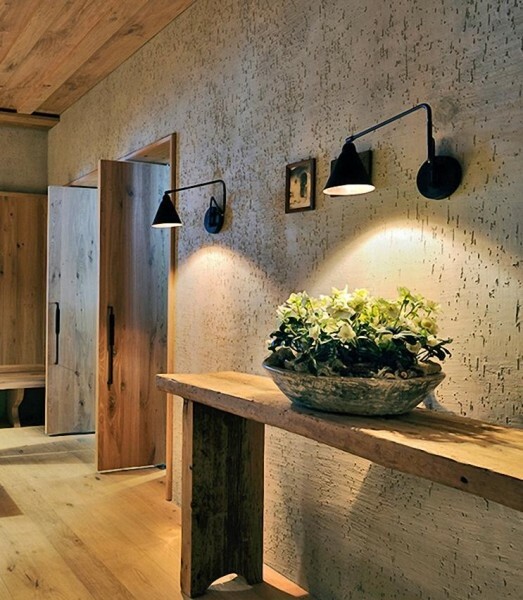
"Bark" in the interior
After completion of the processing of the dried surface and stained its interior paint.
formation of the invoice
With harder textured compositions. Even the best plaster will not look attractive, if you can not apply it on all the rules. finishing technology depends on what kind of results we want to get, so here I will give a general algorithm:
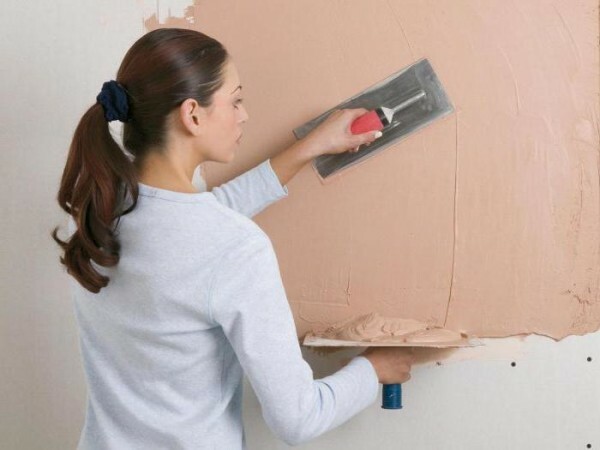
Stacking base layer
- Is first applied a base layer 1-2 mm thick. Because it will be visible from the other layers, it is usually dyed in the mass in the desired shade. The base layer must be dried up as long as he does not cease to stick to hands and fingers at prominaetsya.
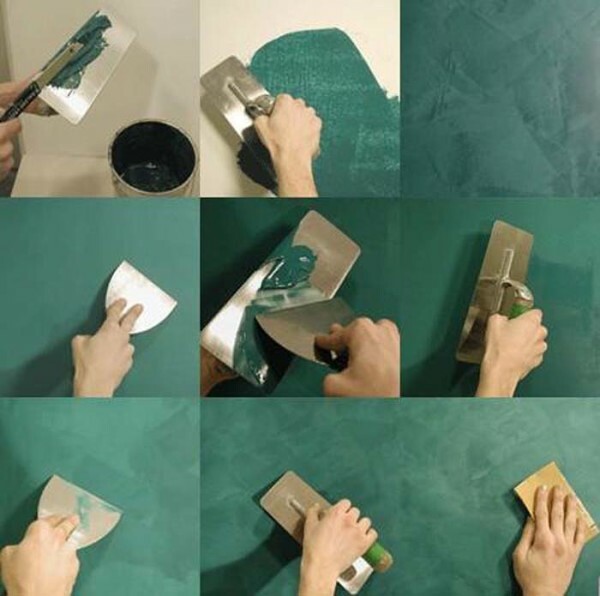
Algorithm application smears
- Now laid decorative layer causing it strokes or uniformly. With swabs thickness not exceeding 0.5 mm, which are applied randomly, simulated surface of natural marble. According to this scheme is applied famous Venetian stucco.

Application of "Venetian" thin strokes
- If we need a textured surface, immediately after application of the decorative layer begin to process it. For this purpose, you can use curly spatula, brushes, sponges, patterned rollers, etc. Using these tools, we create a surface topography, causing grooves, dents, pattern from the roll, etc.
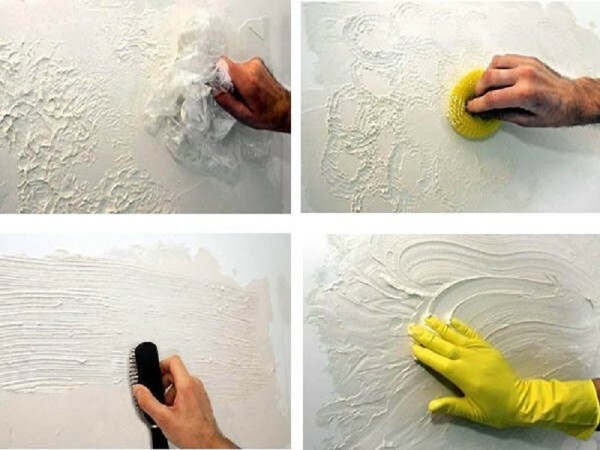
Various methods of forming the texture
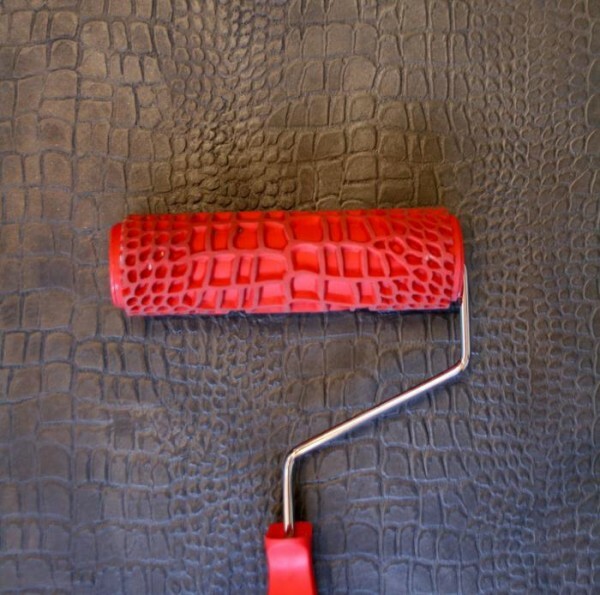
Using embossed roller for processing
For embossed finishes can be kneaded more "fat" part - less filler, binder and more water.
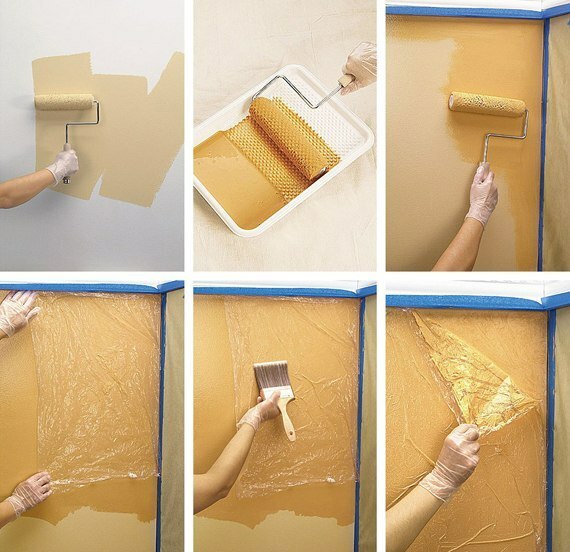
decorating film technology using grout
- It is also possible to draw large surfaces using polyethylene. Film chaotic folds putting a freshly applied to liquid plaster and slightly pressed into the solution. Shoot the film can be in a few hours - it will remain a unique texture.
As is the case with a structural compound, after completion of the surface must be dried.
decoration
If used for plastering the prepared mixture with the pigment and decorative additives, and then drying can confine.
However, at the moment there are many finishing techniques that enable and decorate the surface and give it more operational benefits:
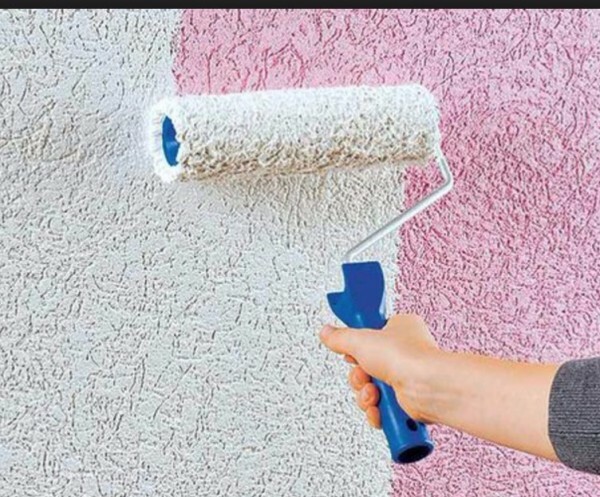
Coloring - The Easiest Way
- color - the most common way of decorating. Is used as the primary, and as an additional technique. In the second case, on top of the colored in the mass of plaster is applied to a contrast (darker or lighter color). With darker colors usually emphasize deepening, with the help of light - "lightens" protruding parts.
- Decorating metallics and pearl. Decorative material as a powder, gel or paste is applied on the plastered wall sponge or brush. Typically, a layer of decor made translucent so that it does not hide the relief and the main color of the plaster.
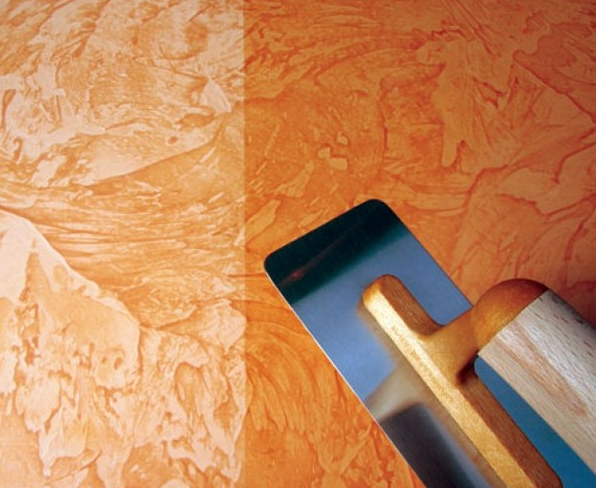
The surface before and after treatment with wax
- waxing - the traditional method for processing Venetian stucco, which can be applied to other formulations. Effectively protects the wall from moisture. The solid wax is applied to the wall of a thin layer using a float / trowel, then polished with a sponge or felt.

Polishing waxed surface
Wax process can only be strong compositions after they are completely dry. The thing is that the polishing material is experiencing severe stress, and can be destroyed.
- varnishing - used for the same purpose as that of waxing. On the surface of the plastered wall is applied an acrylic water-based lacquer (2-3 layers). Varnish coating not only adds shine, but also protects it from external influences.
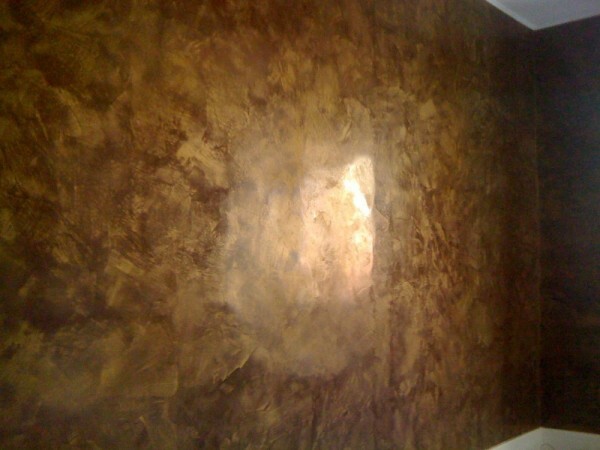
Wall after painting
In addition to the functions described above waxing and varnishing also facilitate the maintenance of the plastered surface. A smooth coating is not so actively accumulates dust and dirt, and if necessary, can be easily cleaned in a wet cleaning.
conclusion
Decorative plaster walls requires us not only knowledge of technology, but also a certain skill. And yet, before the work is to study the tips above and watch the video in this article. Answers to your questions you can get in the comments!


